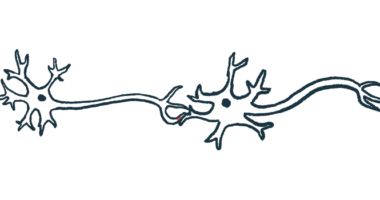Mechanism Underlying Huntington’s May Be in Key Enzyme’s Activity
Link reported between FAK, crucial for neurons, and mutant HTT protein

The activity of focal adhesion kinase (FAK), an enzyme known to play an essential role in nerve cell function, is low in the brains of people with Huntington’s disease, researchers discovered.
Cell and mouse models revealed that the presence of abnormal huntingtin protein, the underlying cause of Huntington’s, blocked FAK activation and reduced its activity. As a result, the proper formation of nerve cell projections critical for nerve cell communication, such as axons and dendrites, was disrupted.
“Because the results of this study show the pathological mechanisms found in actual brain tissues of patients with [Huntington’s disease], I believe it has a greater significance in suggesting a new therapeutic target for human degenerative brain diseases,” Hoon Ryu, PhD, the study’s lead author with the Korea Institute of Science and Technology, said in a press release.
The discovery was reported in the study “Decreased FAK activity and focal adhesion dynamics impair proper neurite formation of medium spiny neurons in Huntington’s disease,” published in the journal Acta Neuropathologica.
In Huntington’s disease, a faulty HTT gene leads to the production of an abnormally long huntingtin protein (mHTT), which is thought to form clumps within nerve cells (neurons), disrupting their normal function. Most sensitive to mHTT are spiny neurons in the striatum — a region of the brain that helps coordinate movement, thinking, and motivation.
Discovery could be crucial in understanding cause of Huntington’s
However, evidence supporting direct neuron damage by mHTT clumping remains inconclusive, suggesting other mechanisms may be involved. Emerging data indicate that the mHTT protein may also prevent neuronal development and maintenance, because the normal HTT protein has various functions in cellular processes.
FAK is an enzyme needed for the formation of neurites, nerve cell projections such as axons and dendrites. Axons extend from the neuron body to dendrites on a neighboring neuron and communicate via a synapse, a small gap where electrical or chemical signals are released.
A research team led by Ryu and Jihye Seong, PhD, investigated the role of FAK in Huntington’s disease using cells, a mouse model, and post-mortem brain tissue from patients.
FAK activity in striatal neurons from brain samples collected from patients post-mortem initially was evaluated, with its activity seen to be significantly reduced compared to healthy tissue. Similar findings were then seen in a Huntington’s mouse model bred to produce human mHTT and a disease-related cell line of striatal neurons.
These results were confirmed by administering mHTT to the striatal region of the mouse brain, which caused FAK activity to lower.
To investigate further, striatal neurons were exposed to carbachol, an eye medication that binds to neurons and activates FAK. In cells that carried mHTT, FAK activation by carbachol was blocked, but not in cells with normal HTT protein.
A lack of FAK in striatal neurons also impaired focal adhesion dynamics, processes regulating cell-to-cell interactions and cell migration, which are critical for neuron development. Consistently, low FAK affected the proper development of neurites in mHTT striatal neurons.
Notably, experiments confirmed that mHTT did not directly interact with FAK and alter its activity. Instead, the team focused on PIP2, a fat-like molecule found in the cell membrane, which is essential for activating FAK.
As expected, striatal neurons producing mHTT had protein clumps within cells. In healthy neurons producing HTT, PIP2 molecules were mostly located at the edge of the cell membrane.
In cells with mHTT, in contrast, PIP2 molecules formed a shell around mHTT clumps, suggesting a strong association between PIP2 and mHTT, the researchers noted. PIP2 clusters around mHTT clumps were also seen in spiny neurons of the striatal region of mouse brains administered mHTT.
Finally, the team demonstrated that PIP2-mHTT clusters disturbed the normal distribution of PIP2 within cell membranes, reducing FAK activity. These findings were confirmed using a specific biosensor that visualized the real-time movement of PIP2 in live cells.
“We provide direct evidence of how FAK function is linked to the pathological [disease-causing] mechanisms underlying the impaired development of neurites and altered synaptic functions in [Huntington’s disease],” the researchers concluded. “The alteration in FAK function may further contribute to a variety of neurodevelopmental abnormalities in [Huntington’s disease].”
Added Seong, “the pathological mechanisms of synaptic dysfunction in patients with Huntington’s disease revealed through this study could be utilized as a therapeutic target for the treatment of brain dysfunction.”







